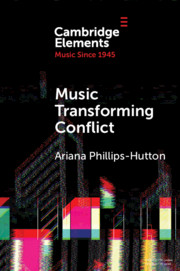Element contents
Music Transforming Conflict
Published online by Cambridge University Press: 20 October 2020
Summary
- Type
- Element
- Information
- Series: Elements in Music since 1945Online ISBN: 9781108891363Publisher: Cambridge University PressPrint publication: 12 November 2020
References
- 12
- Cited by

